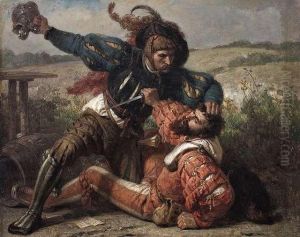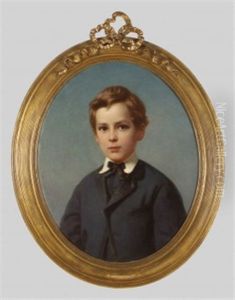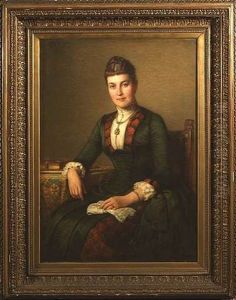Julius Hamel Paintings
Julius Hamel was a German painter known for his contributions to portrait painting and historical scenes. Born on January 19, 1829, in Berlin, he was part of a 19th-century European art scene that was rich with academic tradition and undergoing various changes due to the influences of Romanticism and later, Impressionism.
Hamel received his artistic training at the Prussian Academy of Arts in Berlin, where he was influenced by the teachings of prominent artists of the time. He was particularly known for his skillful use of light and shadow, as well as his attention to detail, which was a hallmark of the academic painting style of this period.
Throughout his career, Hamel produced a wide range of works, including portraits of notable figures of his time, as well as scenes inspired by history and literature. His paintings were characterized by their clarity, realistic detail, and often contained an emotional depth that resonated with viewers. Hamel's work was well-received during his lifetime, and he participated in various exhibitions, gaining recognition and awards for his artistic achievements.
Despite his success, Julius Hamel's name is not as widely recognized today as some of his contemporaries. Nevertheless, he remains an important figure in the German art history of the 19th century. Hamel's paintings can be found in museums, galleries, and private collections, and they continue to be studied for their technique and historical value.
Julius Hamel passed away on December 10, 1907, in Berlin. His legacy lives on through his contributions to the art world, and he is remembered for his dedication to the craft of painting and his ability to capture the spirit of his time through his art.




